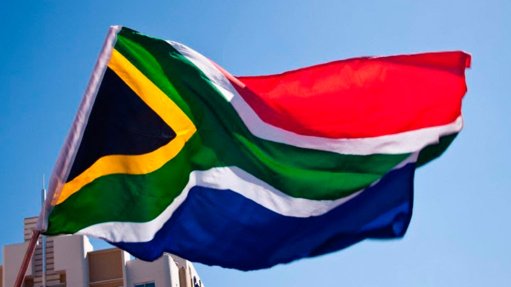Organising for climate change: the ‘two cultures’ problem
Ulrich Beck wrote: “One can possess wealth but one can be afflicted by risks; they are, so to speak, ascribed by civilisation . . . Risk society is a catastrophic society” (Risk Society: Towards A New Modernity).
The physicist CP Snow once wrote a famous essay titled The Two Cultures, which focuses on the divide between technocratic science and the absence of art and culture in science. Snow went on a personal transition, dabbling in writing novels. It was not a promising enterprise for Snow, as the literary critic FR Leavis was scathing of Snow’s Two Cultures thesis and his literary skills. Well, this is not a journey back into an old controversy, but I decided to pick up a train of thought in Snow’s Two Cultures thesis.
One of the cultures relates to science as a practice and its ‘factfulness’, and the other to the art of doing things to win society over and mobilise it as a collective resource against what the philosopher Timothy Morton calls ‘hyperobjects’, which are things that are massively distributed in time and space relative to humans, with the sheer scale of their existence implying that they cannot be touched or resolved by humans, although they interact and entangle with human civilisation in ways that force us to adapt to their existence. Their science is matter of fact; what is not known is how we develop the art to cope with their existence.
The latter art is not about literary perfections but the way in which science informs policy and the necessary actions. Actions that need to be performed on scale require an art of practice that has three elements: leadership, societal cohesion and organisational capacity. This is not an issue about resources, but coordination, which, in itself, is the product of leadership and social cohesion.
When we look at leadership, we do not look for Ubermensch (as Nietzsche would have put it) who is so hyped up that he or she turns out to be less a dysfunctional leader and more a good leader.
The embedded value of leadership is not in what is said but what it can mobilise. We can apply the heuristic that societies with high levels of cognitive dissonance and friction in the body politic respond less effectively to crises than societies that have less intragroup or societal frictions.
Political leadership that can back vision with deep networks and can pull a coalition of interests behind a cohesive purpose and end-outcome is the basis for strong coordination for present and future crises. Politicians, though, come and go, but what needs to remain are strong State and non-State institutions with the dexterity to deal with the problems of society.
For the art of organisation in climate change, we need to look more closely at this issue than we are doing at present. Very little attention is devoted to this in the Intergovernmental Panel on Climate Change processes and reports.
There is a need for the science, but we also need to look more closely at leadership and organisational behaviour during crises. There is an abundance of case studies on how efforts aimed at collective action can be short-circuited or rise, depending on the quality of leadership.. They range from how the climate-induced forest fires in Australia and California to dealing with hurricanes in Cuba versus Haiti. The disastrous events in Europe (high temperatures, fires and floods) point to the need for more effective disaster preparedness – suddenly, adaptation is no longer a poor-country issue only but of rich countries too, and has been for a long time.
In each case, there is a little or big story of the art of cognition, leadership and organisation – the key here is how this art functions in the complexities of a crisis.
By all measures, the US is a powerful and rich country, but it was ill-prepared for a natural disaster of the scale of Hurricane Katrina, which hit the state of Louisiana; things were a little better during Hurricane Ida.
Post-Katrina reports demonstrated the utter failure of the US Federal Emergency Management Agency (FEMA) to coordinate and mobilise, both pre-emptively and during the crisis. At the heart of the critical findings was the problem of cognitive bias: the Republicans controlled both the White House and Congress and, till today, are the least convinced that climate change is a real thing.
The head of FEMA at the time lacked the art of leadership in a crisis.
What is frequently on display is cognitive dysfunction, which dismantles belief in science as a result of populist tendencies, exemplified by what we have seen with respect to Covid-19, with political leaders denying that the virus existed, that there was a crisis and, in some quarters, that vaccination was ineffective, proposing instead untested concoctions as solutions. The consequences were scenes of chaos and dire challenges for frontline healthcare workers.
All crises expose the need for reserve capacity in the public or State domain. Reserve capacity refers to those things hidden from the eye: the robustness of social solidarity, the networks of political infrastructure and the ability to organise material assistance in conditions of distress or circumstances where conventional logistical chains are disrupted.
Most importantly, reserve capacity also touches on cognitive reserve – this is the ability to hold realistic views of the world that are not clouded by false believes, populism or ideology. This even extends to our views of State- versus market-led approaches to resolving crises.
Countries that can muster a coherent and well-coordinated crisis response can mount successful responses, owing to reserve capacity, political coherence and the art of leadership that does not reside in a single individual but manifests through acts of diverse leadership at the frontiers of the crisis itself.
Article Enquiry
Email Article
Save Article
Feedback
To advertise email advertising@creamermedia.co.za or click here
Comments
Press Office
Announcements
What's On
Subscribe to improve your user experience...
Option 1 (equivalent of R125 a month):
Receive a weekly copy of Creamer Media's Engineering News & Mining Weekly magazine
(print copy for those in South Africa and e-magazine for those outside of South Africa)
Receive daily email newsletters
Access to full search results
Access archive of magazine back copies
Access to Projects in Progress
Access to ONE Research Report of your choice in PDF format
Option 2 (equivalent of R375 a month):
All benefits from Option 1
PLUS
Access to Creamer Media's Research Channel Africa for ALL Research Reports, in PDF format, on various industrial and mining sectors
including Electricity; Water; Energy Transition; Hydrogen; Roads, Rail and Ports; Coal; Gold; Platinum; Battery Metals; etc.
Already a subscriber?
Forgotten your password?
Receive weekly copy of Creamer Media's Engineering News & Mining Weekly magazine (print copy for those in South Africa and e-magazine for those outside of South Africa)
➕
Recieve daily email newsletters
➕
Access to full search results
➕
Access archive of magazine back copies
➕
Access to Projects in Progress
➕
Access to ONE Research Report of your choice in PDF format
RESEARCH CHANNEL AFRICA
R4500 (equivalent of R375 a month)
SUBSCRIBEAll benefits from Option 1
➕
Access to Creamer Media's Research Channel Africa for ALL Research Reports on various industrial and mining sectors, in PDF format, including on:
Electricity
➕
Water
➕
Energy Transition
➕
Hydrogen
➕
Roads, Rail and Ports
➕
Coal
➕
Gold
➕
Platinum
➕
Battery Metals
➕
etc.
Receive all benefits from Option 1 or Option 2 delivered to numerous people at your company
➕
Multiple User names and Passwords for simultaneous log-ins
➕
Intranet integration access to all in your organisation


















